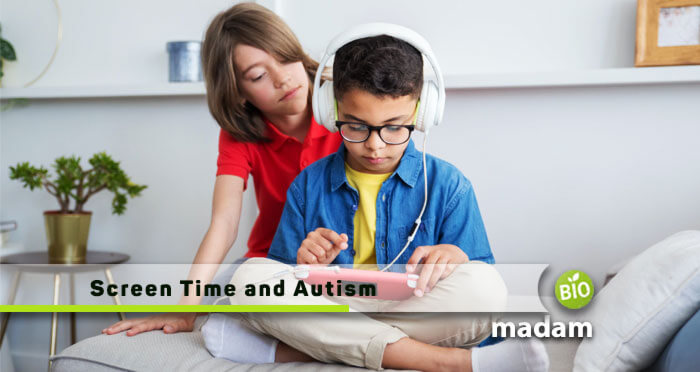New clinical studies indicate the drawback of excessive usage of technology. It is observed that young children who spend too much time with e-gadgets like iPad, tablets, and mobile have autism symptoms. But when parents completely take away the digital screens for a few months, the autistic child’s behavior improves, and symptoms of autism disappear. This phenomenon is called “virtual autism.”Autism Spectrum Disorder New clinical studies indicate the drawback of excessive usage of technology. It is observed that young children who spend too much time with e-gadgets like iPad, tablets, and mobile have autism symptoms. But when parents completely take away the digital screens for a few months, the autistic child’s behavior improves, and symptoms of autism disappear. This phenomenon is called “virtual autism.”
Today’s world is technology-driven. Nowadays, everyone has eyes on the screen, and most of them are obsessed with iPad, tablets, or cell phones. So, it is imperative to know what to do and what not to do with an autistic child and set boundaries to get the best from the technology. Do not let technology hold us back from connecting with others.
Brains at every age, especially at the developing stage, adapt to the environment in which they find themselves. What worries a growing number of advocates is that the potential risks of heavy screen exposure are increasing day by day. It includes some belief that the hastening of autism in the young and attention deficit–hyperactivity disorder (ADHD) in older is because of unlimited and obsessed use of screens.
Autism Spectrum Disorder

Autism spectrum disorder includes a range—or spectrum—of specific behaviors. Those affected behaviors are principally tough when communicating and interacting socially with others, leading to social anxieties They may have very narrow interests. They spend hours doing the same thing again and again, such as spinning, counting, turning on and off lights, or watching the same YouTube video over and over.
Parents who stay alert of the autism symptoms are naturally concerned as these behavioral distractions are putting barriers in their child’s day-to-day progress. ASD symptoms make it challenging to succeed socially, academically, and, hopefully in later life, professionally. Some children never overcome the symptoms of autism, which is why the parents fill with dread when they hear the word autism.
Virtual Autism and Treatment of VR Autism
When a person goes into parenting, he starts feeling danger from runaway vehicles to microscopic bacteria—the same as for digital devices that seem beneficial as well as dangerous. Screens are everywhere, from the line walls, bedrooms, and countertops that can present insurmountable obstacles to a child’s growing mind. Even more, so do the digital screens that kids hold in their own hands.
A psychiatrist in Romania has witnessed an astonishing rise in autism spectrum disorder (ASD) among youngsters in children’s hospitals in the last decade. The term “virtual autism” was first introduced by Dr. Marius Zamfir, a Romanian clinical psychologist. He collected data from autistic children and found a common trend in their parenting.
The trend was that children with autism spent more than 4-5 hours daily watching screens like T.V, computers, laptops, iPods, tablets, or mobile phones. The cause behind this increased number of autistic children was unknown, so he dug into the activity logs the hospital collected on all patients admitted. Through those records, he found a strong emerging parenting trend: children are presenting with autism were spending four or more hours a day watching some kind of screen: television, computer, tablet, or phone.
VR Autism Therapy

The child psychiatrist asked parents to take them away from screens for a while. Make their children busy in other activities like going outside more and engaging in outdoor activities, reading books together, talking face-to-face, and simply playing. He wanted affected children to engage autistic children in more day-to-day social interactions. He suggested that parents provide more chances of socialization to their autistic children. And this is the primary challenge for anyone on the autism spectrum.
So, Could Pulling Autistic Children Away From Their Screens Of Solitude Relieve Some Of The Symptoms?
Yes, he reports, autism symptoms resolved, leading the doctor to identify something entirely new: what he calls “Virtual Autism,” or autism induced by screens. The youngest children say 18 months old, resolved autism issues within a few months, while the hospital’s oldest patient, an 8-year-old boy, took two years to recover fully from his ASD symptoms. Yet recover he did, along with, he reports, a series of 82 children with a similar clinical course.

Hi, my name is Eva. I am currently practicing as a clinical social worker, that being my childhood desire. As a licensed therapist holding MPhil in Clinical Psychology, I am now on biomadam to provide the natives with the best family advice! Do you have any questions? See you in the comment section.


Hello Eva. Is virtual autism a real condition ?